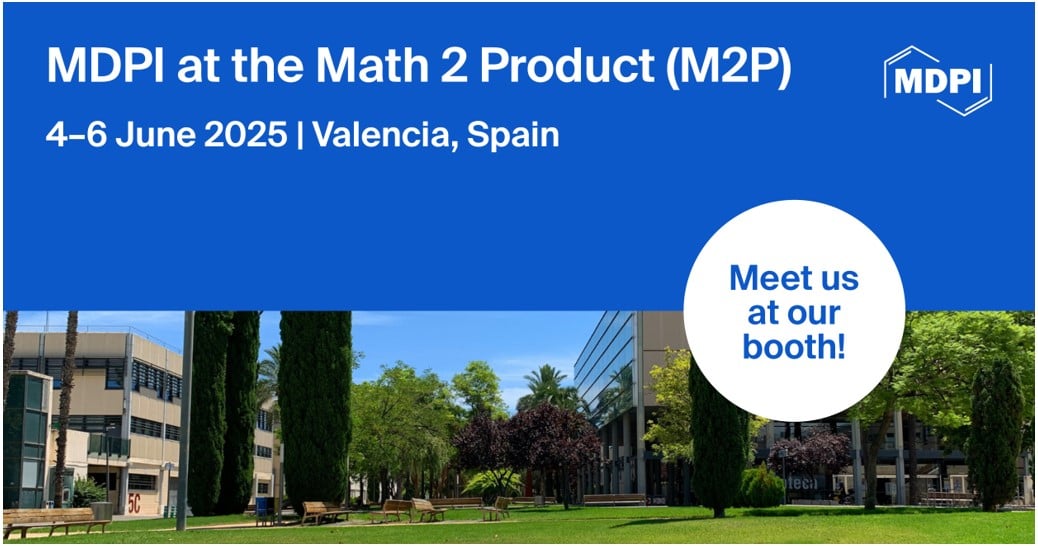Topical Advisory Panel applications are now closed. Please contact the Editorial Office with any queries.
Journal Description
Computation
Computation
is a peer-reviewed journal of computational science and engineering published monthly online by MDPI.
- Open Access— free for readers, with article processing charges (APC) paid by authors or their institutions.
- High Visibility: indexed within Scopus, ESCI (Web of Science), CAPlus / SciFinder, Inspec, dblp, and other databases.
- Journal Rank: JCR - Q2 (Mathematics, Interdisciplinary Applications) / CiteScore - Q2 (Applied Mathematics)
- Rapid Publication: manuscripts are peer-reviewed and a first decision is provided to authors approximately 18.6 days after submission; acceptance to publication is undertaken in 4.2 days (median values for papers published in this journal in the second half of 2024).
- Recognition of Reviewers: reviewers who provide timely, thorough peer-review reports receive vouchers entitling them to a discount on the APC of their next publication in any MDPI journal, in appreciation of the work done.
Impact Factor:
1.9 (2023);
5-Year Impact Factor:
2.0 (2023)
Latest Articles
Eye Care: Predicting Eye Diseases Using Deep Learning Based on Retinal Images
Computation 2025, 13(4), 91; https://doi.org/10.3390/computation13040091 - 3 Apr 2025
Abstract
Eye illness detection is important, yet it can be difficult and error-prone. In order to effectively and promptly diagnose eye problems, doctors must use cutting-edge technologies. The goal of this research paper is to develop a sophisticated model that will help physicians detect
[...] Read more.
Eye illness detection is important, yet it can be difficult and error-prone. In order to effectively and promptly diagnose eye problems, doctors must use cutting-edge technologies. The goal of this research paper is to develop a sophisticated model that will help physicians detect different eye conditions early on. These conditions include age-related macular degeneration (AMD), diabetic retinopathy, cataracts, myopia, and glaucoma. Common eye conditions include cataracts, which cloud the lens and cause blurred vision, and glaucoma, which can cause vision loss due to damage to the optic nerve. The two conditions that could cause blindness if treatment is not received are age-related macular degeneration (AMD) and diabetic retinopathy, a side effect of diabetes that destroys the blood vessels in the retina. Problems include myopic macular degeneration, glaucoma, and retinal detachment—severe types of nearsightedness that are typically defined as having a refractive error of –5 diopters or higher—are also more likely to occur in people with high myopia. We intend to apply a user-friendly approach that will allow for faster and more efficient examinations. Our research attempts to streamline the eye examination procedure, making it simpler and more accessible than traditional hospital approaches. Our goal is to use deep learning and machine learning to develop an extremely accurate model that can assess medical images, such as eye retinal scans. This was accomplished by using a huge dataset to train the machine learning and deep learning model, as well as sophisticated image processing techniques to assist the algorithm in identifying patterns of various eye illnesses. Following training, we discovered that the CNN, VggNet, MobileNet, and hybrid Deep Learning models outperformed the SVM and Random Forest machine learning models in terms of accuracy, achieving above 98%. Therefore, our model could assist physicians in enhancing patient outcomes, raising survival rates, and creating more effective treatment plans for patients with these illnesses.
Full article
(This article belongs to the Special Issue Computational Medical Image Analysis—2nd Edition)
►
Show Figures
Open AccessArticle
Oscillation Flow of Viscous Electron Fluids in Conductors of Rectangular Cross-Section
by
Andriy A. Avramenko, Igor V. Shevchuk, Nataliia P. Dmitrenko, Andriy I. Tyrinov, Yiliia Y. Kovetska and Andriy S. Kobzar
Computation 2025, 13(4), 90; https://doi.org/10.3390/computation13040090 - 1 Apr 2025
Abstract
►▼
Show Figures
The article presents results of an analytical and numerical modeling of electron fluid motion and heat generation in a rectangular conductor at an alternating electric potential. The analytical solution is based on the series expansion solution (Fourier method) and double series solution (method
[...] Read more.
The article presents results of an analytical and numerical modeling of electron fluid motion and heat generation in a rectangular conductor at an alternating electric potential. The analytical solution is based on the series expansion solution (Fourier method) and double series solution (method of eigenfunction decomposition). The numerical solution is based on the lattice Boltzmann method (LBM). An analytical solution for the electric current was obtained. This enables estimating the heat generation in the conductor and determining the influence of the parameters characterizing the conductor dimensions, the parameter M (phenomenological transport time describing momentum-nonconserving collisions), the Knudsen number (mean free path for momentum-nonconserving) and the Sh number (frequency) on the heat generation rate as an electron flow passes through a conductor.
Full article

Figure 1
Open AccessArticle
Invariance of Stationary Distributions of Exponential Networks with Prohibitions and Determination of Maximum Prohibitions
by
Gurami Tsitsiashvili and Marina Osipova
Computation 2025, 13(4), 89; https://doi.org/10.3390/computation13040089 - 1 Apr 2025
Abstract
The paper considers queuing networks with prohibitions on transitions between network nodes that determine the protocol of their operation. In the graph of transient network intensities, a set of base vertices is allocated (proportional to the number of edges), and we raise the
[...] Read more.
The paper considers queuing networks with prohibitions on transitions between network nodes that determine the protocol of their operation. In the graph of transient network intensities, a set of base vertices is allocated (proportional to the number of edges), and we raise the question of whether some subset of it can be deleted such that the stationary distribution of the Markov process describing the functioning of the network is preserved. In order for this condition to be fulfilled, it is sufficient that the set of vertices of the graph of transient intensities, after the removal of a subset of the base vertices, coincide with the set of states of the Markov process and that this graph be connected. It is proved that the ratio of the number of remaining base vertices to their total number n converges to one-half for
(This article belongs to the Section Computational Engineering)
►▼
Show Figures

Figure 1
Open AccessArticle
MedMAE: A Self-Supervised Backbone for Medical Imaging Tasks
by
Anubhav Gupta, Islam Osman, Mohamed S. Shehata, W. John Braun and Rebecca E. Feldman
Computation 2025, 13(4), 88; https://doi.org/10.3390/computation13040088 - 1 Apr 2025
Abstract
Medical imaging tasks are very challenging due to the lack of publicly available labeled datasets. Hence, it is difficult to achieve high performance with existing deep learning models as they require a massive labeled dataset to be trained effectively. An alternative solution is
[...] Read more.
Medical imaging tasks are very challenging due to the lack of publicly available labeled datasets. Hence, it is difficult to achieve high performance with existing deep learning models as they require a massive labeled dataset to be trained effectively. An alternative solution is to use pre-trained models and fine-tune them using a medical imaging dataset. However, all existing models are pre-trained using natural images, which represent a different domain from that of medical imaging; this leads to poor performance due to domain shift. To overcome these problems, we propose a pre-trained backbone using a collected medical imaging dataset with a self-supervised learning tool called a masked autoencoder. This backbone can be used as a pre-trained model for any medical imaging task, as it is trained to learn a visual representation of different types of medical images. To evaluate the performance of the proposed backbone, we use four different medical imaging tasks. The results are compared with existing pre-trained models. These experiments show the superiority of our proposed backbone in medical imaging tasks.
Full article
(This article belongs to the Special Issue Computational Medical Image Analysis—2nd Edition)
►▼
Show Figures
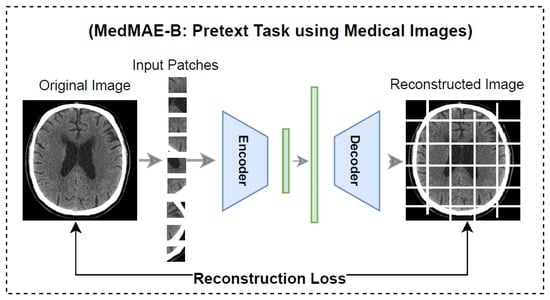
Figure 1
Open AccessArticle
Subsequential Continuity in Neutrosophic Metric Space with Applications
by
Vishal Gupta, Nitika Garg and Rahul Shukla
Computation 2025, 13(4), 87; https://doi.org/10.3390/computation13040087 - 25 Mar 2025
Abstract
This paper introduces two concepts, subcompatibility and subsequential continuity, which are, respectively, weaker than the existing concepts of occasionally weak compatibility and reciprocal continuity. These concepts are studied within the framework of neutrosophic metric spaces. Using these ideas, a common fixed point theorem
[...] Read more.
This paper introduces two concepts, subcompatibility and subsequential continuity, which are, respectively, weaker than the existing concepts of occasionally weak compatibility and reciprocal continuity. These concepts are studied within the framework of neutrosophic metric spaces. Using these ideas, a common fixed point theorem is developed for a system involving four maps. Furthermore, the results are applied to solve the Volterra integral equation, demonstrating the practical use of these findings in neutrosophic metric spaces.
Full article
(This article belongs to the Special Issue Nonlinear System Modelling and Control)
Open AccessArticle
A Machine Learning-Based Computational Methodology for Predicting Acute Respiratory Infections Using Social Media Data
by
Jose Manuel Ramos-Varela, Juan C. Cuevas-Tello and Daniel E. Noyola
Computation 2025, 13(4), 86; https://doi.org/10.3390/computation13040086 - 25 Mar 2025
Abstract
We study the relationship between tweets referencing Acute Respiratory Infections (ARI) or COVID-19 symptoms and confirmed cases of these diseases. Additionally, we propose a computational methodology for selecting and applying Machine Learning (ML) algorithms to predict public health indicators using social media data.
[...] Read more.
We study the relationship between tweets referencing Acute Respiratory Infections (ARI) or COVID-19 symptoms and confirmed cases of these diseases. Additionally, we propose a computational methodology for selecting and applying Machine Learning (ML) algorithms to predict public health indicators using social media data. To achieve this, a novel pipeline was developed, integrating three distinct models to predict confirmed cases of ARI and COVID-19. The dataset contains tweets related to respiratory diseases, published between 2020 and 2022 in the state of San Luis Potosí, Mexico, obtained via the Twitter API (now X). The methodology is composed of three stages, and it involves tools such as Dataiku and Python with ML libraries. The first two stages focuses on identifying the best-performing predictive models, while the third stage includes Natural Language Processing (NLP) algorithms for tweet selection. One of our key findings is that tweets contributed to improved predictions of ARI confirmed cases but did not enhance COVID-19 time series predictions. The best-performing NLP approach is the combination of Word2Vec algorithm with the KMeans model for tweet selection. Furthermore, predictions for both time series improved by 3% in the second half of 2020 when tweets were included as a feature, where the best prediction algorithm is DeepAR.
Full article
(This article belongs to the Special Issue Feature Papers in Computational Biology)
►▼
Show Figures

Figure 1
Open AccessArticle
Numerical Analysis of the Impact of Variable Borer Miner Operating Modes on the Microclimate in Potash Mine Working Areas
by
Lev Levin, Mikhail Semin, Stanislav Maltsev, Roman Luzin and Andrey Sukhanov
Computation 2025, 13(4), 85; https://doi.org/10.3390/computation13040085 - 24 Mar 2025
Abstract
This paper addresses the numerical simulation of unsteady, non-isothermal ventilation in a dead-end mine working of a potash mine excavated using a borer miner. During its operations, airflow can become unsteady due to the variable operating modes of the borer miner, the switching
[...] Read more.
This paper addresses the numerical simulation of unsteady, non-isothermal ventilation in a dead-end mine working of a potash mine excavated using a borer miner. During its operations, airflow can become unsteady due to the variable operating modes of the borer miner, the switching on and off of its motor cooling fans, and the movement of a shuttle car transporting ore. While steady ventilation in a dead-end working with a borer miner has been previously studied, the specific features of air microclimate parameter distribution in more complex and realistic unsteady scenarios remain unexplored. Our experimental studies reveal that over time, air velocity and, particularly, air temperature experience significant fluctuations. In this study, we develop and parameterize a mathematical model and perform a series of numerical simulations of unsteady heat and mass transfer in a dead-end working. These simulations account for the switching on and off of the borer miner’s fans and the movement of the shuttle car. The numerical model is calibrated using data from our experiments conducted in a potash mine. The analysis of the first factor is carried out by examining two extreme scenarios under steady-state ventilation conditions, while the second factor is analyzed within a fully unsteady framework using a dynamic mesh approach in the ANSYS Fluent 2021 R2. The numerical results demonstrate that the borer miner’s operating mode notably impacts the velocity and temperature fields, with a twofold decrease in maximum velocity near the cabin after the shuttle car departed and a temperature difference of about 1–1.5 °C between extreme scenarios in the case of forcing ventilation. The unsteady simulations using the dynamic mesh approach revealed that temperature variations were primarily caused by the borer miner’s cooling system, while the moving shuttle car generated short-term aerodynamic oscillations.
Full article
(This article belongs to the Special Issue Advances in Computational Methods for Fluid Flow)
►▼
Show Figures

Figure 1
Open AccessArticle
Tree-Based Methods of Volatility Prediction for the S&P 500 Index
by
Marin Lolic
Computation 2025, 13(4), 84; https://doi.org/10.3390/computation13040084 - 24 Mar 2025
Abstract
Predicting asset return volatility is one of the central problems in quantitative finance. These predictions are used for portfolio construction, calculation of value at risk (VaR), and pricing of derivatives such as options. Classical methods of volatility prediction utilize historical returns data and
[...] Read more.
Predicting asset return volatility is one of the central problems in quantitative finance. These predictions are used for portfolio construction, calculation of value at risk (VaR), and pricing of derivatives such as options. Classical methods of volatility prediction utilize historical returns data and include the exponentially weighted moving average (EWMA) and generalized autoregressive conditional heteroskedasticity (GARCH). These approaches have shown significantly higher rates of predictive accuracy than corresponding methods of return forecasting, but they still have vast room for improvement. In this paper, we propose and test several methods of volatility forecasting on the S&P 500 Index using tree ensembles from machine learning, namely random forest and gradient boosting. We show that these methods generally outperform the classical approaches across a variety of metrics on out-of-sample data. Finally, we use the unique properties of tree-based ensembles to assess what data can be particularly useful in predicting asset return volatility.
Full article
(This article belongs to the Special Issue Quantitative Finance and Risk Management Research: 2nd Edition)
►▼
Show Figures

Figure 1
Open AccessArticle
A High-Order Hybrid Approach Integrating Neural Networks and Fast Poisson Solvers for Elliptic Interface Problems
by
Yiming Ren and Shan Zhao
Computation 2025, 13(4), 83; https://doi.org/10.3390/computation13040083 - 23 Mar 2025
Abstract
►▼
Show Figures
A new high-order hybrid method integrating neural networks and corrected finite differences is developed for solving elliptic equations with irregular interfaces and discontinuous solutions. Standard fourth-order finite difference discretization becomes invalid near such interfaces due to the discontinuities and requires corrections based on
[...] Read more.
A new high-order hybrid method integrating neural networks and corrected finite differences is developed for solving elliptic equations with irregular interfaces and discontinuous solutions. Standard fourth-order finite difference discretization becomes invalid near such interfaces due to the discontinuities and requires corrections based on Cartesian derivative jumps. In traditional numerical methods, such as the augmented matched interface and boundary (AMIB) method, these derivative jumps can be reconstructed via additional approximations and are solved together with the unknown solution in an iterative procedure. Nontrivial developments have been carried out in the AMIB method in treating sharply curved interfaces, which, however, may not work for interfaces with geometric singularities. In this work, machine learning techniques are utilized to directly predict these Cartesian derivative jumps without involving the unknown solution. To this end, physics-informed neural networks (PINNs) are trained to satisfy the jump conditions for both closed and open interfaces with possible geometric singularities. The predicted Cartesian derivative jumps can then be integrated in the corrected finite differences. The resulting discrete Laplacian can be efficiently solved by fast Poisson solvers, such as fast Fourier transform (FFT) and geometric multigrid methods, over a rectangular domain with Dirichlet boundary conditions. This hybrid method is both easy to implement and efficient. Numerical experiments in two and three dimensions demonstrate that the method achieves fourth-order accuracy for the solution and its derivatives.
Full article

Figure 1
Open AccessArticle
Numerical Simulation of Capture of Diffusing Particles in Porous Media
by
Valeriy E. Arkhincheev, Bair V. Khabituev and Stanislav P. Maltsev
Computation 2025, 13(4), 82; https://doi.org/10.3390/computation13040082 - 22 Mar 2025
Abstract
►▼
Show Figures
Numerical modeling was conducted to study the capture of particles diffusing in porous media with traps. The pores are cylindrical in shape, and the traps are randomly distributed along the cylindrical surfaces of the pores. The dynamics of particle capture by the traps
[...] Read more.
Numerical modeling was conducted to study the capture of particles diffusing in porous media with traps. The pores are cylindrical in shape, and the traps are randomly distributed along the cylindrical surfaces of the pores. The dynamics of particle capture by the traps, as well as the filling of the traps, were investigated. In general, the decrease in the number of particles follows an exponential trend, with a characteristic time determined by the trap concentration. However, at longer times, extended plateaus emerge in the particle distribution function. Additionally, the dynamics of the interface boundary corresponding to the median trap filling (M = 0.5) were examined. This interface separates regions where traps are filled with a probability greater than 0.5 from regions where traps are filled with a probability less than 0.5. The motion of the interface over time was found to follow a logarithmic dependence. The influence of the radius of the pore on the capture on traps, which are placed on the internal surface of the cylinders, was investigated. The different dependencies of the extinction time on the number of traps were found at different radii of pores the first time.
Full article

Figure 1
Open AccessArticle
Introducing Monotone Enriched Nonexpansive Mappings for Fixed Point Approximation in Ordered CAT(0) Spaces
by
Safeer Hussain Khan, Rizwan Anjum and Nimra Ismail
Computation 2025, 13(4), 81; https://doi.org/10.3390/computation13040081 - 21 Mar 2025
Abstract
►▼
Show Figures
The aim of this paper is twofold: introducing the concept of monotone enriched nonexpansive mappings and a faster iterative process. Our examples illustrate the novelty of our newly introduced concepts. We investigate the iterative estimation of fixed points for such mappings for the
[...] Read more.
The aim of this paper is twofold: introducing the concept of monotone enriched nonexpansive mappings and a faster iterative process. Our examples illustrate the novelty of our newly introduced concepts. We investigate the iterative estimation of fixed points for such mappings for the first time within an ordered CAT(0) space. It is done by proving some strong and

Figure 1
Open AccessArticle
Cascade-Based Input-Doubling Classifier for Predicting Survival in Allogeneic Bone Marrow Transplants: Small Data Case
by
Ivan Izonin, Roman Tkachenko, Nazarii Hovdysh, Oleh Berezsky, Kyrylo Yemets and Ivan Tsmots
Computation 2025, 13(4), 80; https://doi.org/10.3390/computation13040080 - 21 Mar 2025
Abstract
In the field of transplantology, where medical decisions are heavily dependent on complex data analysis, the challenge of small data has become increasingly prominent. Transplantology, which focuses on the transplantation of organs and tissues, requires exceptional accuracy and precision in predicting outcomes, assessing
[...] Read more.
In the field of transplantology, where medical decisions are heavily dependent on complex data analysis, the challenge of small data has become increasingly prominent. Transplantology, which focuses on the transplantation of organs and tissues, requires exceptional accuracy and precision in predicting outcomes, assessing risks, and tailoring treatment plans. However, the inherent limitations of small datasets present significant obstacles. This paper introduces an advanced input-doubling classifier designed to improve survival predictions for allogeneic bone marrow transplants. The approach utilizes two artificial intelligence tools: the first Probabilistic Neural Network generates output signals that expand the independent attributes of an augmented dataset, while the second machine learning algorithm performs the final classification. This method, based on the cascading principle, facilitates the development of novel algorithms for preparing and applying the enhanced input-doubling technique to classification tasks. The proposed method was tested on a small dataset within transplantology, focusing on binary classification. Optimal parameters for the method were identified using the Dual Annealing algorithm. Comparative analysis of the improved method against several existing approaches revealed a substantial improvement in accuracy across various performance metrics, underscoring its practical benefits
Full article
(This article belongs to the Special Issue Artificial Intelligence Applications in Public Health: 2nd Edition)
►▼
Show Figures

Figure 1
Open AccessArticle
A Molecular Dynamics Simulation on the Methane Adsorption in Nanopores of Shale
by
Qiuye Yuan, Jinghua Yang, Shuxia Qiu and Peng Xu
Computation 2025, 13(3), 79; https://doi.org/10.3390/computation13030079 - 20 Mar 2025
Abstract
Gas adsorption in nanoscale pores is one of the key theoretical bases for shale gas development. However, the influence mechanisms of gas adsorption capacity and the second adsorption layer in nanoscale pores are very complex, and are difficult to directly observe by using
[...] Read more.
Gas adsorption in nanoscale pores is one of the key theoretical bases for shale gas development. However, the influence mechanisms of gas adsorption capacity and the second adsorption layer in nanoscale pores are very complex, and are difficult to directly observe by using traditional experimental methods. Therefore, multilayer graphene is used to model the nanopores in a shale reservoir, and the molecular dynamics method is carried out to study the adsorption dynamics of methane molecules. The results show that the adsorption density of methane molecules is inversely proportional to the temperature and pore size, and it positively correlates to the graphene layer number and pressure. The smaller adsorption region will reach the adsorption equilibrium state earlier, and the adsorption layer thickness is smaller. When the pore size is larger than 1.7 nm, the single-layer adsorption becomes double-layer adsorption of methane molecules. The peak of the second adsorption layer depends on the pressure and temperature, while the position of the second adsorption layer depends on the pore size. The present work is useful for understanding the dynamics mechanism of gas molecules in a nanoscale confined space, and may provide a theoretical basis for the development of unconventional natural gas.
Full article
(This article belongs to the Special Issue Advances in Computational Methods for Fluid Flow)
►▼
Show Figures
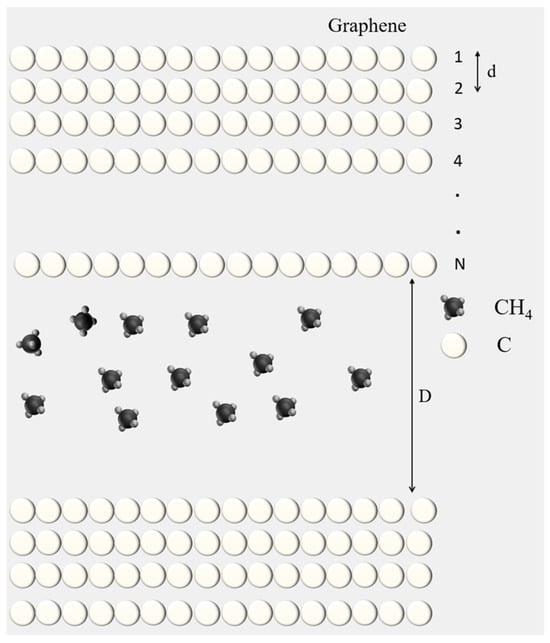
Figure 1
Open AccessReview
A Bibliometric Review of Deep Learning Approaches in Skin Cancer Research
by
Catur Supriyanto, Abu Salam, Junta Zeniarja, Danang Wahyu Utomo, Ika Novita Dewi, Cinantya Paramita, Adi Wijaya and Noor Zuraidin Mohd Safar
Computation 2025, 13(3), 78; https://doi.org/10.3390/computation13030078 - 19 Mar 2025
Abstract
Early detection of skin cancer is crucial for successful treatment and improved patient outcomes. Medical images play a vital role in this process, serving as the primary data source for both traditional and modern diagnostic approaches. This study aims to provide an overview
[...] Read more.
Early detection of skin cancer is crucial for successful treatment and improved patient outcomes. Medical images play a vital role in this process, serving as the primary data source for both traditional and modern diagnostic approaches. This study aims to provide an overview of the significant role of medical images in skin cancer detection and highlight developments in the use of deep learning for early diagnosis. The scope of this survey includes an in-depth exploration of state-of-the-art deep learning methods, an evaluation of public datasets commonly used for training and validation, and a bibliometric analysis of recent advancements in the field. This survey focuses on publications in the Scopus database from 2019 to 2024. The search string is used to find articles by their abstracts, titles, and keywords, and includes several public datasets, like HAM and ISIC, ensuring relevance to the topic. Filters are applied based on the year, document type, source type, and language. The analysis identified 1697 articles, predominantly comprising journal articles and conference proceedings. The analysis shows that the number of articles has increased over the past five years. This growth is driven not only by developed countries but also by developing countries. Dermatology departments in various hospitals play a significant role in advancing skin cancer detection methods. In addition to identifying publication trends, this study also reveals underexplored areas to encourage new explorations using the VOSviewer and Bibliometrix applications.
Full article
(This article belongs to the Special Issue Computational Medical Image Analysis—2nd Edition)
►▼
Show Figures
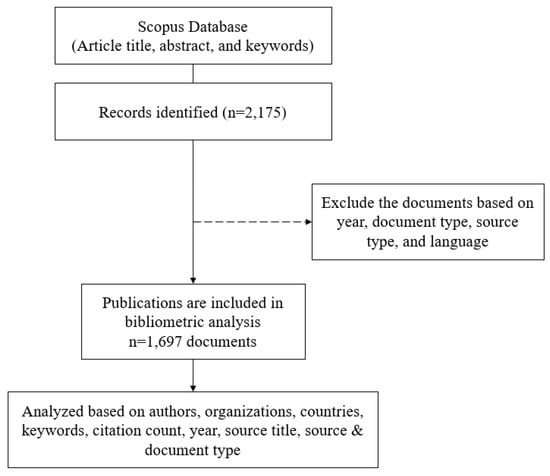
Figure 1
Open AccessArticle
Analysis of a Queueing Model with Flexible Priority, Batch Arrival, and Impatient Customers
by
Alexander Dudin, Olga Dudina, Sergei Dudin and Agassi Melikov
Computation 2025, 13(3), 77; https://doi.org/10.3390/computation13030077 - 18 Mar 2025
Abstract
►▼
Show Figures
In this study, we consider a multi-server priority queueing model with batch arrivals of two types of customers, a finite buffer, and two input finite buffers for storing customers that cannot be admitted for service immediately upon arrival. The transition of a customer
[...] Read more.
In this study, we consider a multi-server priority queueing model with batch arrivals of two types of customers, a finite buffer, and two input finite buffers for storing customers that cannot be admitted for service immediately upon arrival. The transition of a customer from an input buffer to the main buffer can occur after an exponentially distributed time. Customers residing in the input and main buffers are impatient. The four-dimensional Markov chain is used to describe the dynamics of the system under consideration. It is analyzed via the derivation of its generator and providing an effective algorithm for computing its steady-state probabilities. Formulas for calculating the system’s major performance metrics are established. Numerical results demonstrating the suggested methods’ viability and the effect of variation of transition rates of customers from the input buffers are presented.
Full article
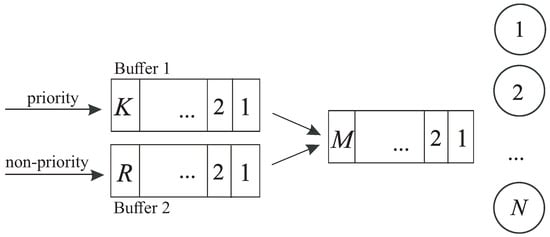
Figure 1
Open AccessArticle
Evaluating Predictive Models for Three Green Finance Markets: Insights from Statistical vs. Machine Learning Approaches
by
Sonia Benghiat and Salim Lahmiri
Computation 2025, 13(3), 76; https://doi.org/10.3390/computation13030076 - 14 Mar 2025
Abstract
As climate change has become of eminent importance in the last two decades, so has interest in industry-wide carbon emissions and policies promoting a low-carbon economy. Investors and policymakers could improve their decision-making by producing accurate forecasts of relevant green finance market indices:
[...] Read more.
As climate change has become of eminent importance in the last two decades, so has interest in industry-wide carbon emissions and policies promoting a low-carbon economy. Investors and policymakers could improve their decision-making by producing accurate forecasts of relevant green finance market indices: carbon efficiency, clean energy, and sustainability. The purpose of this paper is to compare the performance of single-step univariate forecasts produced by a set of selected statistical and regression-tree-based predictive models, using large datasets of over 2500 daily records of green market indices gathered in a ten-year timespan. The statistical models include simple exponential smoothing, Holt’s method, the ETS version of the exponential model, linear regression, weighted moving average, and autoregressive moving average (ARMA). In addition, the decision tree-based machine learning (ML) methods include the standard regression trees and two ensemble methods, namely the random forests and extreme gradient boosting (XGBoost). The forecasting results show that (i) exponential smoothing models achieve the best performance, and (ii) ensemble methods, namely XGBoost and random forests, perform better than the standard regression trees. The findings of this study will be valuable to both policymakers and investors. Policymakers can leverage these predictive models to design balanced policy interventions that support environmentally sustainable businesses while fostering continued economic growth. In parallel, investors and traders will benefit from an ease of adaptability to rapid market changes thanks to the computationally cost-effective model attributes found in this study to generate profits.
Full article
(This article belongs to the Special Issue Quantitative Finance and Risk Management Research: 2nd Edition)
►▼
Show Figures
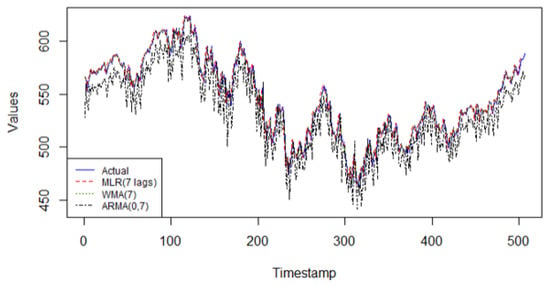
Figure 1
Open AccessArticle
Short-Term Load Forecasting in Distribution Substation Using Autoencoder and Radial Basis Function Neural Networks: A Case Study in India
by
Venkataramana Veeramsetty, Prabhu Kiran Konda, Rakesh Chandra Dongari and Surender Reddy Salkuti
Computation 2025, 13(3), 75; https://doi.org/10.3390/computation13030075 - 14 Mar 2025
Abstract
►▼
Show Figures
Electric load forecasting is an essential task for Distribution System Operators in order to achieve proper planning, high integration of small-scale production from renewable energy sources, and to define effective marketing strategies. In this framework, machine learning and data dimensionality reduction techniques can
[...] Read more.
Electric load forecasting is an essential task for Distribution System Operators in order to achieve proper planning, high integration of small-scale production from renewable energy sources, and to define effective marketing strategies. In this framework, machine learning and data dimensionality reduction techniques can be useful for building more efficient tools for electrical energy load prediction. In this paper, a machine learning model based on a combination of a radial basis function neural network and an autoencoder is used to forecast the electric load on a 33/11 kV substation located in Godishala, Warangal, India. One year of historical data on an electrical substation and weather are considered to assess the effectiveness of the proposed model. The impact of weather, day, and season status on load forecasting is also considered. The input dataset dimensionality is reduced using autoencoder to build a light-weight machine learning model to be deployed on edge devices. The proposed methodology is supported by a comparison with the state of the art based on extensive numerical simulations.
Full article
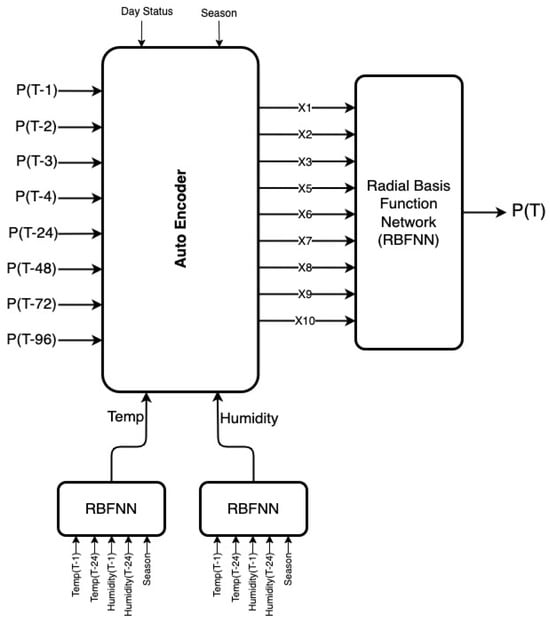
Figure 1
Open AccessArticle
Integrated Scheduling of Stacker and Reclaimer in Dry Bulk Terminals: A Hybrid Genetic Algorithm
by
Imane Torbi, Imad Belassiria, Mohamed Mazouzi and Sanaa Aidi
Computation 2025, 13(3), 74; https://doi.org/10.3390/computation13030074 - 13 Mar 2025
Abstract
►▼
Show Figures
Competitive dynamics in dry bulk terminals necessitate efficient planning and scheduling to optimize operations. This study focuses on the productivity of stackers and reclaimers by developing a mathematical optimization model to enhance scheduling efficiency. A mixed-integer linear programming (MILP) model was formulated to
[...] Read more.
Competitive dynamics in dry bulk terminals necessitate efficient planning and scheduling to optimize operations. This study focuses on the productivity of stackers and reclaimers by developing a mathematical optimization model to enhance scheduling efficiency. A mixed-integer linear programming (MILP) model was formulated to minimize the maximum completion time (makespan) of operations while ensuring smooth material flow and resource utilization. Given the computational complexity of real-world scenarios, a novel hybrid genetic algorithm (GA) was proposed. This algorithm integrates tabu search to generate a high-quality initial population size and employs innovative chromosome designs that respect operational constraints, such as equipment availability, material flow continuity, and sequencing restrictions. This hybrid approach balances exploration and exploitation, improving solution convergence and robustness. Computational experiments using real data from a Moroccan dry bulk terminal validated the algorithm’s efficiency and effectiveness. Performance indicators such as makespan reduction, equipment utilization, and computational efficiency were analyzed. The results demonstrate that the hybrid GA significantly reduced processing times and improved resource efficiency compared to conventional methods. Additionally, the algorithm showed scalability across different operational scenarios, confirming its adaptability to dynamic terminal conditions. These findings highlight the potential of advanced optimization techniques to enhance decision making and improve operational productivity in dry bulk terminals.
Full article

Figure 1
Open AccessArticle
Non-Hydrostatic Galerkin Model with Weighted Average Pressure Profile
by
Lucas Calvo, Diana De Padova and Michele Mossa
Computation 2025, 13(3), 73; https://doi.org/10.3390/computation13030073 - 13 Mar 2025
Abstract
This work develops a novel two-dimensional, depth-integrated, non-hydrostatic model for wave propagation simulation using a weighted average non-hydrostatic pressure profile. The model is constructed by modifying an existing non-hydrostatic discontinuous/continuous Galerkin finite-element model with a linear, vertical, non-hydrostatic pressure profile. Using a weighted
[...] Read more.
This work develops a novel two-dimensional, depth-integrated, non-hydrostatic model for wave propagation simulation using a weighted average non-hydrostatic pressure profile. The model is constructed by modifying an existing non-hydrostatic discontinuous/continuous Galerkin finite-element model with a linear, vertical, non-hydrostatic pressure profile. Using a weighted average linear/quadratic non-hydrostatic pressure profile has been shown to increase the performance of earlier models. The results suggest that implementing a weighted average non-hydrostatic pressure profile, in conjunction with a calculated or optimized
(This article belongs to the Special Issue Advances in Computational Methods for Fluid Flow)
►▼
Show Figures
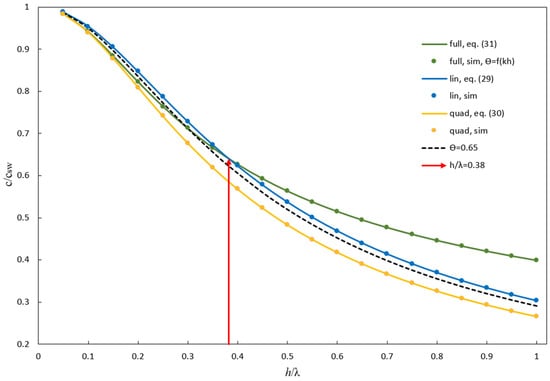
Figure 1
Open AccessArticle
Short-Term Predictions of Global Horizontal Irradiance Using Recurrent Neural Networks, Support Vector Regression, Gradient Boosting Random Forest and Advanced Stacking Ensemble Approaches
by
Fhulufhelo Walter Mugware, Thakhani Ravele and Caston Sigauke
Computation 2025, 13(3), 72; https://doi.org/10.3390/computation13030072 - 13 Mar 2025
Abstract
►▼
Show Figures
In today’s world, where sustainable energy is essential for the planet’s survival, accurate solar energy forecasting is crucial. This study focused on predicting short-term Global Horizontal Irradiance (GHI) using minute-averaged data from the Southern African Universities Radiometric Network (SAURAN) at the Univen Radiometric
[...] Read more.
In today’s world, where sustainable energy is essential for the planet’s survival, accurate solar energy forecasting is crucial. This study focused on predicting short-term Global Horizontal Irradiance (GHI) using minute-averaged data from the Southern African Universities Radiometric Network (SAURAN) at the Univen Radiometric Station in South Africa. Various techniques were evaluated for their predictive accuracy, including Recurrent Neural Networks (RNNs), Support Vector Regression (SVR), Gradient Boosting (GB), Random Forest (RF), Stacking Ensemble, and Double Nested Stacking (DNS). The results indicated that RNN performed the best in terms of mean absolute error (MAE) and root mean squared error (RMSE) among the machine learning models. However, Stacking Ensemble with XGBoost as the meta-model outperformed all individual models, improving accuracy by 67.06% in MAE and 22.28% in RMSE. DNS further enhanced accuracy, achieving a 93.05% reduction in MAE and an 88.54% reduction in RMSE compared to the best machine learning model, as well as a 78.89% decrease in MAE and an 85.27% decrease in RMSE compared to the best single stacking model. Furthermore, experimenting with the order of the DNS meta-model revealed that using RF as the first-level meta-model followed by XGBoost yielded the highest accuracy, showing a 47.39% decrease in MAE and a 61.35% decrease in RMSE compared to DNS with RF at both levels. These findings underscore advanced stacking techniques’ potential to improve GHI forecasting significantly.
Full article
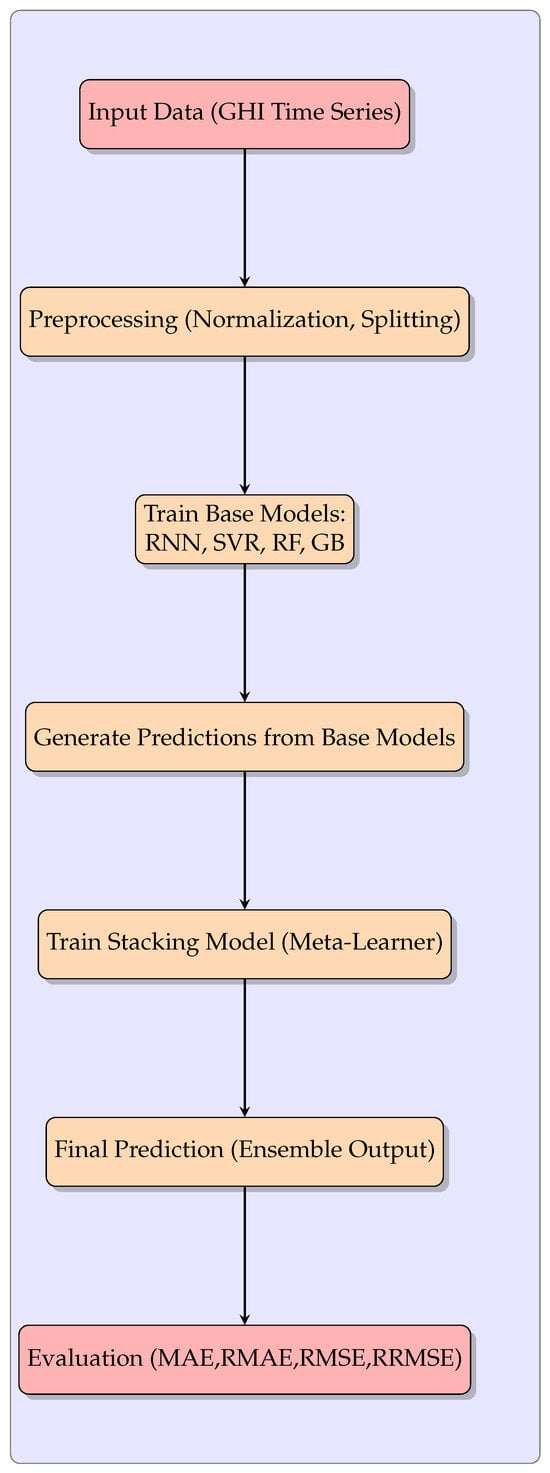
Figure 1
Highly Accessed Articles
Latest Books
E-Mail Alert
News
Topics
Topic in
Axioms, Computation, Fractal Fract, Mathematics, Symmetry
Fractional Calculus: Theory and Applications, 2nd Edition
Topic Editors: António Lopes, Liping Chen, Sergio Adriani David, Alireza AlfiDeadline: 31 May 2025
Topic in
Axioms, Computation, Entropy, MCA, Mathematics, Symmetry
Numerical Methods for Partial Differential Equations
Topic Editors: Pengzhan Huang, Yinnian HeDeadline: 30 June 2025
Topic in
Applied Sciences, Computation, Entropy, J. Imaging, Optics
Color Image Processing: Models and Methods (CIP: MM)
Topic Editors: Giuliana Ramella, Isabella TorcicolloDeadline: 30 July 2025
Topic in
Algorithms, Computation, Mathematics, Molecules, Symmetry, Nanomaterials, Materials
Advances in Computational Materials Sciences
Topic Editors: Cuiying Jian, Aleksander CzekanskiDeadline: 30 September 2025

Conferences
Special Issues
Special Issue in
Computation
Nonlinear System Modelling and Control
Guest Editor: Chathura WanigasekaraDeadline: 30 April 2025
Special Issue in
Computation
Computational Social Science and Complex Systems—2nd Edition
Guest Editors: Minzhang Zheng, Pedro ManriqueDeadline: 30 April 2025
Special Issue in
Computation
Advances in Crash Simulations: Modeling, Analysis, and Applications
Guest Editors: Andrés Amador Garcia-Granada, Hirpa G. LemuDeadline: 30 April 2025
Special Issue in
Computation
Mathematical Modeling and Study of Nonlinear Dynamic Processes
Guest Editor: Alexander PchelintsevDeadline: 30 April 2025






